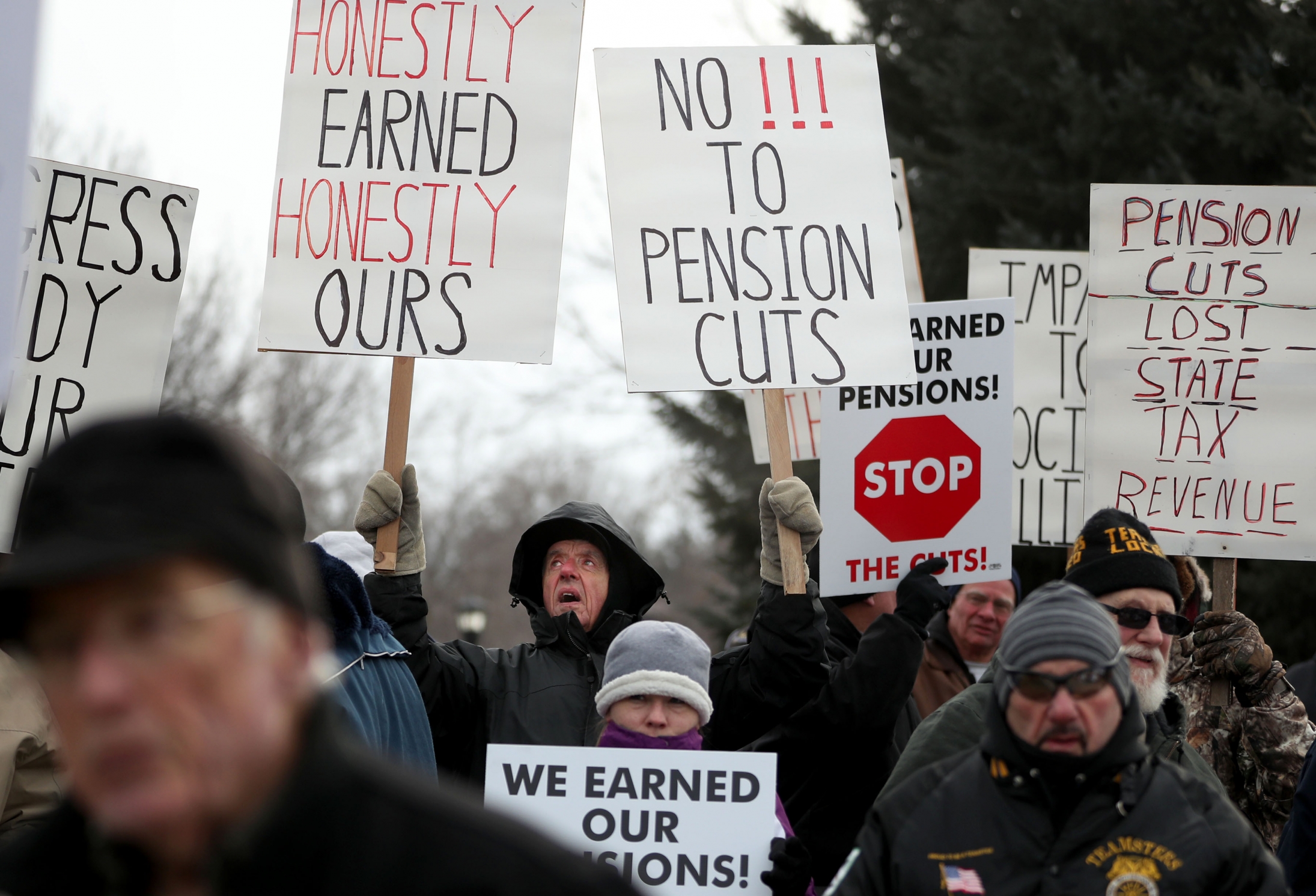From Benefits to Bankruptcy
BY ATANAS SPASOV

Washington D.C. has a tendency to ignore long-term financial pitfalls and paint a rosy picture to keep up appearances. With regards to promises of new social programs, this behavior is a hallmark of politics too familiar to the American public. The most pressing iteration of this deceit has come in the form of overstating the ability of state pension funds to meet the needs of retired employees – a result of poor financial planning and overconfidence in financial markets. This is not a problem that can be ignored until later, it is a pressing issue with many states parading pension plans underfunded by the billions.
According to the Financial Times, U.S. public pension funds lack the $3.85 trillion needed to cover the benefits of current and retired workers. Every state public employee pension fund, sans New York’s, seems to subsist on two terms: failing to make reasonable plans to meet their obligation and lacking the political desire to meet these plans. State governments’ refusal to organize efficiently is breaking the bank, with the worst offenders being Kentucky, New Jersey, and, most notably, Illinois with its $251 billion deficit .
California is no different, with nearly 20 percent of the state’s various municipal budgets accounting for public employee pensions. The burden has pushed some cities to the edge of bankruptcy. Richmond recently had to make budget cuts to jobs, street repairs, and libraries just to meet their obligations. The fact of the matter is that nearly every pension fund, public or private, is severely underfunded due to decades of missing the benchmark. Since the financial crisis, interest rates have been low, with federal funds rate at practically zero, which has made it nearly impossible for these funds to make any returns through their standard method of low-risk investments. The decrease in local and state tax revenue as a result of the 2001 and 2008 recessions has also added fuel to the flames. State pension funds can also be overly generous. It is not uncommon for these funds to pay out 70 percent of a worker’s salary until their death. The standards should be no different than what is usually offered, in which employers match funds for 401k plans and lower the reliance on Social Security.
There are four possible options moving forward: 1) change the worker to retiree ratio by raising retirement ages or tweaking immigration policy, 2) reduce obligations by lowering the expected annual rate of return on pension plans, 3) increase resources to fund pensions by raising contribution rates or taxes, and, finally, 4) default. Incidentally, it so happens that none of the aforementioned options are politically viable. One must look no further than the labor strikes within France, when French President Nicolas Sarkozy's government sought to extend the retirement age of public employees by two years. This culminated in weeks of strikes, the buildup of trash by idle collectors, fuel shortages, and looting. In the end, it was a bitter pill that the French public had to swallow and one that the American public must as well.
It likely that Illinois, already on the verge of receiving a “junk” credit rating due to mismanagement, will be the first state to fall to insolvency. It is not the only state to be in dire straits, but its implosion would certainly serve as a wake up call as to what has been occurring for the past few decades. Congress must undertake meaningful reform in order to raise retirement ages commensurate with the increase in life expectancy and find a way to finance the gap between what they have been promising and what is actually happening. If the government's inaction continues as it has since the 1990s, one can only wait until Kentucky trips over itself and Mitch McConnell is awoken by millions pounding on his door for results.
